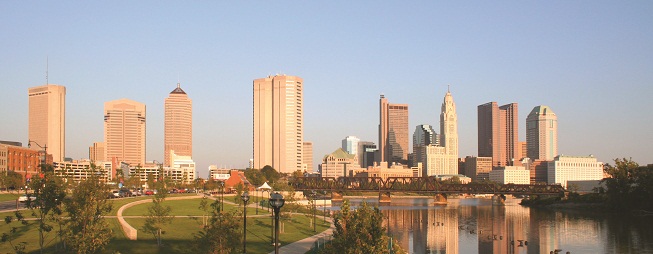
The long and winding road
That leads to your door
Will never disappear
I've seen that road before
It always leads me here
Leads me to your door.
 In 1970 when Paul McCartney penned the lyrics for “The Long and Winding Road” for The Beatles hit album Let It Be, little did he know that it would become the quartet’s final number-one song.
In 1970 when Paul McCartney penned the lyrics for “The Long and Winding Road” for The Beatles hit album Let It Be, little did he know that it would become the quartet’s final number-one song.
From late 2008 until recently, McCartney’s haunting ballad could just as accurately have been describing the difficult challenge of trying to access capital for business growth and expansion.
Every business needs capital to grow and expand. But the cash-flush 2000s came to a screeching halt in late 2008 when investment banking giant Lehman Brothers declared bankruptcy and the real estate market collapsed. Capital dried up as a liquidity shortfall impacted
In the financial chaos, the Fed loaned money at zero interest. The government purchased troubled assets and equity via TARP -- the Troubled Asset Relief Program. A $700 billion bank bailout followed. Economic aftershocks rippled around the world. A global recession the likes many of us had never witnessed ensued, from which countries and companies are still digging out.
A long and winding road, indeed.
The wild and windy night
That the rain washed away
Has left a pool of tears
Crying for the day
Why leave me standing here?
Let me know the way.
Finding Our Way
Despite the doom and gloom, there is evidence emerging that the capital markets, which began to see cautious improvement in late 2011, will continue to progress in 2012.
More businesses are accessing essential funding, combining smart business practices embraced during the recession with new and historical sources of capital—f rom venture capitalists to state incentives, and from federal government programs to conventional bank financing. While not as readily available as in 2008 and earlier, lending and capital sources are loosening up. And as the political races play out and tax and regulatory situations become clearer, expect lending to increase.
 |
| Former Lehman Brothers building on 7th Avenue in New York City - Lawrence Wee/Dreamstime.com |
“We’re seeing a significant upswing in companies wanting to expand, now that overcapacity has been worked off and spending is beginning to climb,” noted John Sisson, a principal in Greenville, South Carolina-based Global Location Strategies, a site-selection, incentive-negotiation and real estate consultancy that works for corporate clients around the globe.
“Larger, financially strong companies that are in a position to acquire real estate or enter expansion mode can tap cash stockpiles or lock-in debt at extremely low cost, and are in an excellent position to emerge from the downturn even stronger than before,” Sisson added.
Access to Capital Easier for Some
For large companies with extensive assets, credit lines and performance history, capital comes easier. But not every organization is so blessed. Many times, smaller or less-established organizations have to get creative. Consider the example of Proterra.
In 2010, Proterra announced that it would locate an R&D and assembly facility in Greenville, South Carolina, at the Clemson University International Center for Automotive Research. Proterra designs and assembles all-electric and battery-dominant hybrid-drive vehicles including transit, commercial buses, and parcel delivery vehicles.
Trumpeting its transit bus that achieves roughly 500 percent improvement in efficiency over conventional diesel buses, the company announced it would invest $68 million and create 1,300 jobs in
Armed with nearly $30 million in VC funding, Proterra executives learned in January 2011 that the moneys funding their investment had been embezzled from a Venezuelan pension fund. The VC’s assets were frozen. Cash was cut off. Within weeks, Proterra was on the precipice of bankruptcy.
To survive, a group of Greenville investors stepped forward with cash and bridge loans. A $30 million equity investment by a highly regarded green technology VC firm was hammered out. The company was saved. Once again, Proterra’s future is bright.
As the recession has lingered, companies have found financing increasingly difficult to access. Banks require more cash down than ever, along with collateral and letters of credit. Until GDP begins a stronger post-recessionary upswing, energy prices stabilize and the political environment settles, many bankers will continue to be hesitant to open coffers.
Necessity being the mother of invention, savvy organizations are looking beyond banks to access capital for growth. And in a variety of forms, companies are finding the way to those with money to lend—and to communities hungry to gain jobs and investment.
 |
| Photo courtesy of Derek Jensen |
Tapping Venture Capital and Angel Investors
Venture capital can typically be found for technology, advanced material and biomedical research companies where owners will grant control and ownership to VCs in exchange for a capital infusion. But with fewer than 1,500 such deals annually, it’s far from a frequent course of action.
For smaller deals, accredited individuals—defined by the SEC as possessing income greater than $200K per year or net worth exceeding $1 million—can provide capital as angel investors. But there can be significant regulatory risks if the deals are not structured properly.
Public-Sector Financing, Incentives and Bonds
Today, additional attention is being paid to public funding sources. After all, if a company can tap public sources to reduce their own dollars in a project—and help communities hungry for jobs and investment in the wake of the economic downturn—it’s a win-win.
Some states are getting innovative in their pursuit of economic development projects—and it can pay off in a big way for companies seeking capital.
With budgets hit hard by lagging revenues brought on by the recession, many states have cut back their budgets for incentives. Others–like Ohio–are getting aggressive.
Ohio has announced a pending deal with Governor John Kasich’s privatized development agency and JobsOhio to pay the state $1.4 billion for rights to Ohio’s wholesale liquor profits over 25 years. Once debts backed by liquor profits are paid for and a $500 million payment made to the general fund, the deal would leave roughly $100 million annually for economic development loans for businesses that want to grow in
“We will be able to understand the needs of each company and structure something that results in more projects for Ohio,” said Kristi Tanner, COO for JobsOhio in a recent interview with The Columbus (OH) Dispatch, adding that revenues generated by the arrangement would be plowed into loans to businesses seeking to train workers, expand or relocate to Ohio.
Other states are using incentives to attract businesses, including land deals, property tax reductions, fee-in-lieu-of-tax arrangements, payroll tax rebates for jobs added, job training, tax increment financing and even grants to mitigate capital costs that normally might require private financing sources.
Other organizations are pursuing public grants for expenses like training, once less attractive because of cumbersome and time-demanding application processes when capital was easily accessible.
“Incentives are becoming more important,” noted Sisson of Global Location Strategies. “Today, incentives can be a critical determinant in not just where to locate a project but if the project will become a reality or remain on the drawing board.”
Incentives can be particularly attractive to newer companies which lack a historical balance sheet or cash flow to access traditional sources of capital. “Many companies don’t think to seek incentives for smaller expansions or capital maintenance programs, but frequently funds are available to help offset those costs,” added GLS’s Sisson. His company recently proposed a property tax abatement to local authorities for just such an expansion at an industrial facility in the Midwest—pleasantly surprising their client by securing a $600,000 tax abatement in the process.
"Using tax increment financing on larger projects in the form of bonds secured by future property tax payments can be extremely beneficial in helping secure a deal for a community, and in helping a company pay for site preparation, infrastructure improvement, securing critical equipment and even building construction,” Sisson added.
Still, such programs take time, and only rarely should drive a deal. Factors such as skilled available labor, utility infrastructure, raw material access, natural disaster risk, transportation, permitting requirements, and site and building costs should be weighed first, with incentives considered after viable communities have been identified.
Finally, taxable and tax-exempt bond financing of a project—or a blend of the two—can provide significant interest-rate cost advantages, and even term flexibility.

Government Programs to Explore
The
To promote regional business development, the SBA’s 7(a) loan program supports companies acquiring, expanding or starting a business. Through loan guarantees, the SBA ensures that bank lenders get paid back first, opening that pipeline of lending by doing so.
The SBA’s $1billion Early-Stage Innovation Fund provides gap financing for companies that lack cash flow or assets required by banks, while the Impact Investment Fund aids businesses in emerging sectors like clean energy or which are located in underserved communities.
The Economic Development Administration’s Revolving Loan Fund leverages private funds with low-cost, fully amortized term loan facilities in amounts up to the low six figures for use as working capital, land/building acquisition, and equipment purchases when project financing cannot be obtained through conventional sources.
The EDA’s i6 Green Initiative encourages technology commercialization, new venture formation and job creation across the United States, while Startup America accelerates high-growth entrepreneurship by unlocking access to low-cost capital to fuel business growth.
Many times I've been alone
And many times I've cried
Anyway you'll never know
The many ways I've tried
Banks and private lenders are loosening the purse strings
Reports of banks not lending are waning, especially for companies that can meet today’s more-stringent lending requirements. And across
And as banks realize they can offset their own lending risk by utilizing federal government loan guarantee initiatives, expect the market to further loosen up.
“Banks are becoming more comfortable when businesses use a blend of capital or lending sources to spread the risk,” noted Sisson. “Companies with strong cash reserves and proven track records may not need to go that route. But for mid-sized businesses or start-ups in emerging industries like renewable energy, sharing the risk across multiple capital sources can be key to getting the deal done.”
Finding the Right Path for You
Partnering with the right business advisors, whose business is creativity and whose livelihood is based upon finding ways to solve problems, can help businesses of any size. With a proliferation of capital sources available—state retirement fund financing, debt funds, real estate investment trusts (REITs), commercial-mortgage-backed securities, and more—smart businesses today should seek out an advisor who can connect multiple capital sources with the right opportunity.
And still they lead me back
To the long and winding road
You left me standing here
A long, long time ago
Don't leave me waiting here
Lead me to your door.
“Identify the right partners, and put them to work for you,” Sisson noted. “They’ll lead you to the location, the supplier, the incentive package or the capital you need. Even in a tough economy, that’s what we do. And we do it every day.”

